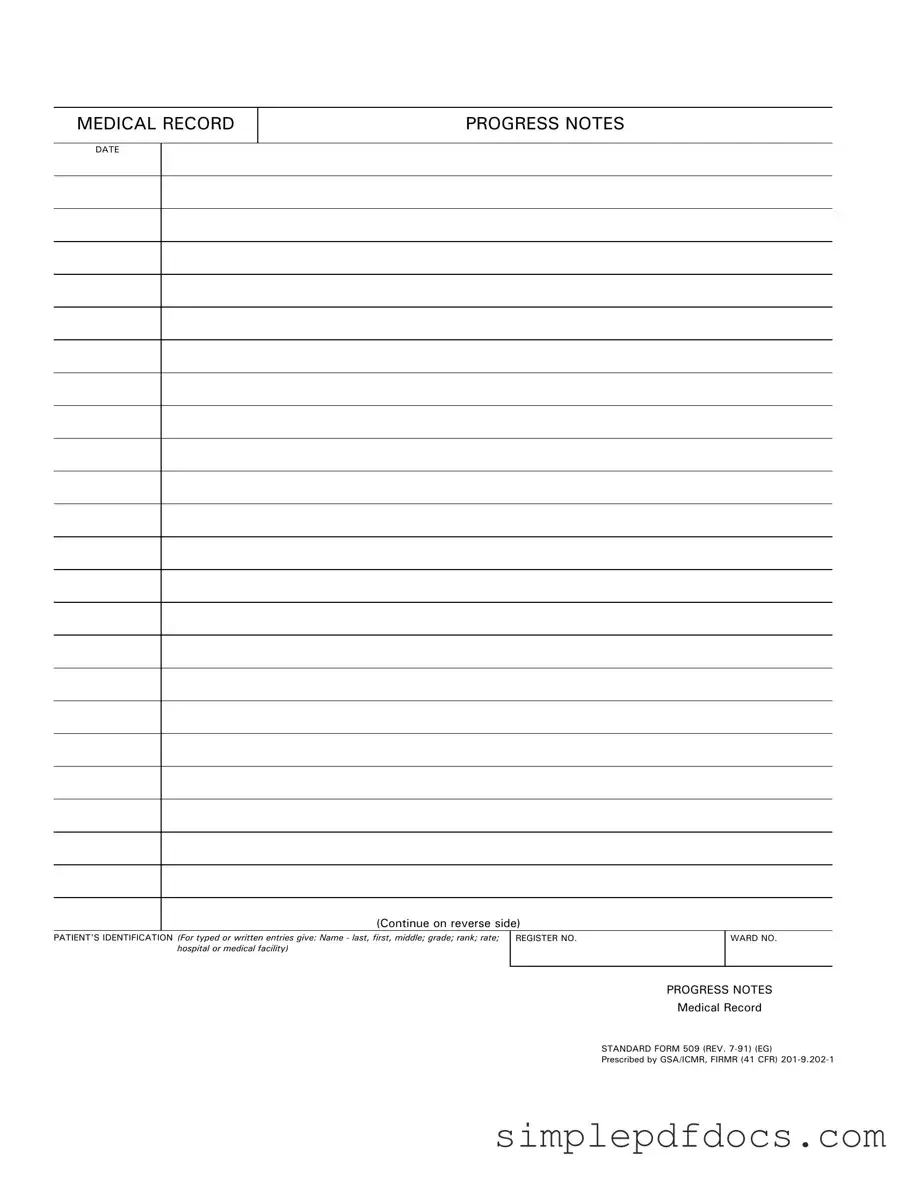Fill Your Progress Notes Form
The Progress Notes form is a standardized document used in medical records to track a patient's treatment and progress over time. This form includes essential details such as the patient's identification, date, and specific notes regarding their medical care. It serves as a vital tool for healthcare providers to communicate effectively about a patient's status and ongoing treatment plans.
Get Document Here
